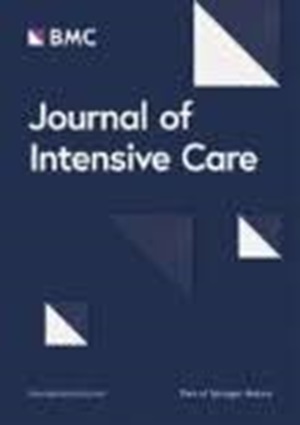脓毒症重症患者红细胞分布宽度与 30 天死亡率之间的关系:倾向得分匹配研究
IF 4.7
2区 医学
Q1 CRITICAL CARE MEDICINE
引用次数: 0
摘要
脓毒症是全球死亡的主要原因,目前已开发出许多生物标志物用于早期死亡风险分层。红细胞分布宽度(RDW)是一种常规的血液学数据,已被发现与多种疾病的死亡率有关;因此,我们旨在研究红细胞分布宽度与脓毒症重症患者死亡率之间的关系。我们分析了 TriNetX 平台上脓毒症成人重症患者的数据,排除了血液恶性肿瘤、地中海贫血和缺铁性贫血患者。我们采用倾向评分匹配(PSM)(1:1)来减轻混杂效应,并计算了危险比(HR)和 95% 置信度(CI),以确定 RDW 与 30 天死亡率之间的关系。我们还通过使用不同的 RDW 切点和败血症严重程度进行了敏感性分析。共有 256387 名重症脓毒症患者被纳入分析,其中 40.0% 的患者的 RDW 等于或高于 16%。经过 PSM 分析,我们发现高 RDW 与 30 天死亡率的增加有关(HR:1.887,95% CI 1.847-1.928)。使用不同的 RDW 切点可以得出一致的关联,使用 12%、14%、16%、18% 和 20% 的切点得出的关联强度分别为 2.098、2.204、1.887、1.809 和 1.932。此外,我们还发现不同严重程度的重症脓毒症患者之间存在一致的相关性,休克、接受机械通气、菌血症和需要血液透析的患者之间的相关性分别为 1.731、1.735、2.380 和 1.979。我们发现,RDW 与重症脓毒症患者的 30 天死亡率相关,这表明它有可能成为脓毒症的预后标志物。还需要更多的研究来探索其潜在机制。本文章由计算机程序翻译,如有差异,请以英文原文为准。
Association between red blood cell distribution width and 30-day mortality in critically ill septic patients: a propensity score-matched study
Sepsis is the leading cause of death worldwide, and a number of biomarkers have been developed for early mortality risk stratification. Red blood cell distribution width (RDW) is a routinely available hematological data and has been found to be associated with mortality in a number of diseases; therefore, we aim to address the association between RDW and mortality in critically ill patients with sepsis. We analyzed data of critically ill adult patients with sepsis on the TriNetX platform, excluding those with hematologic malignancies, thalassemia, and iron deficiency anemia. Propensity score-matching (PSM) (1:1) was used to mitigate confounding effects, and hazard ratio (HR) with 95% confidence (CI) was calculated to determine the association between RDW and 30-day mortality. We further conducted sensitivity analyses through using distinct cut-points of RDW and severities of sepsis. A total of 256,387 critically ill septic patients were included in the analysis, and 40.0% of them had RDW equal to or higher than 16%. After PSM, we found that high RDW was associated with an increased 30-day mortality rate (HR: 1.887, 95% CI 1.847–1.928). The associations were consistent using distinct cut-points of RDW, with the strength of association using cut-points of 12%, 14%, 16%, 18% and 20% were 2.098, 2.204, 1.887, 1.809 and 1.932, respectively. Furthermore, we found consistent associations among critically ill septic patients with distinct severities, with the association among those with shock, receiving mechanical ventilation, bacteremia and requirement of hemodialysis being 1.731, 1.735, 2.380 and 1.979, respectively. We found that RDW was associated with 30-day mortality in critically ill septic patients, underscoring the potential as a prognostic marker in sepsis. More studies are needed to explore the underlying mechanisms.
求助全文
通过发布文献求助,成功后即可免费获取论文全文。
去求助
来源期刊

Journal of Intensive Care
Medicine-Critical Care and Intensive Care Medicine
CiteScore
11.90
自引率
1.40%
发文量
51
审稿时长
15 weeks
期刊介绍:
"Journal of Intensive Care" is an open access journal dedicated to the comprehensive coverage of intensive care medicine, providing a platform for the latest research and clinical insights in this critical field. The journal covers a wide range of topics, including intensive and critical care, trauma and surgical intensive care, pediatric intensive care, acute and emergency medicine, perioperative medicine, resuscitation, infection control, and organ dysfunction.
Recognizing the importance of cultural diversity in healthcare practices, "Journal of Intensive Care" also encourages submissions that explore and discuss the cultural aspects of intensive care, aiming to promote a more inclusive and culturally sensitive approach to patient care. By fostering a global exchange of knowledge and expertise, the journal contributes to the continuous improvement of intensive care practices worldwide.
 求助内容:
求助内容: 应助结果提醒方式:
应助结果提醒方式:


